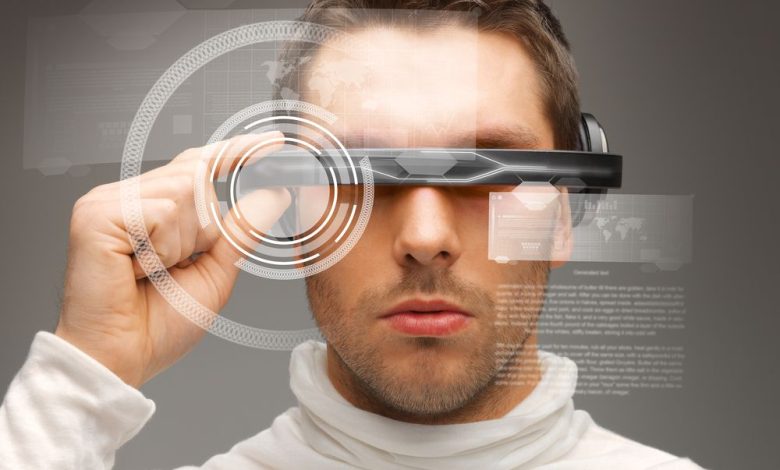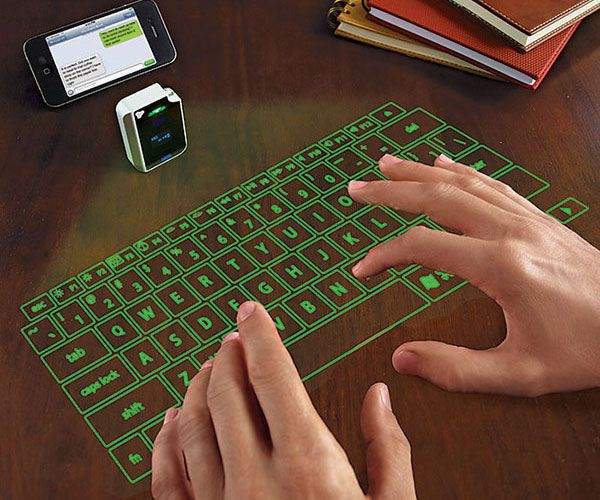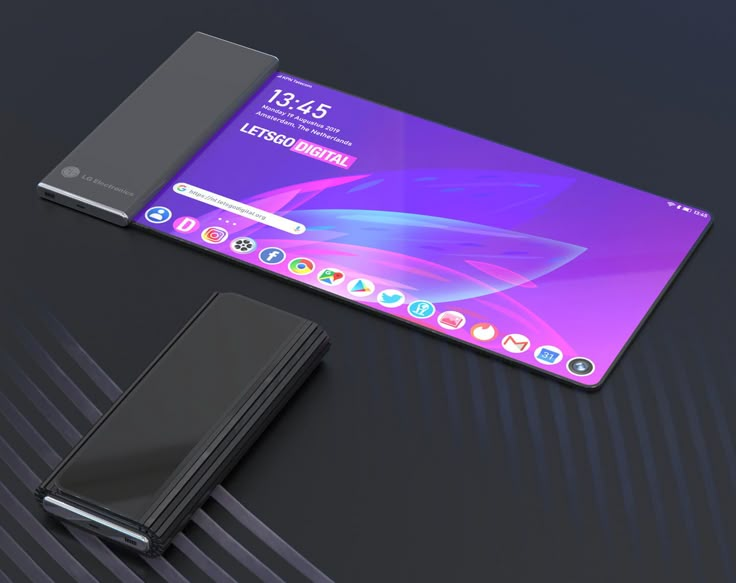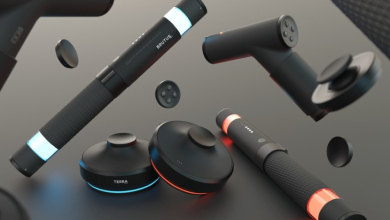High-Tech Gadgets Offer Unprecedented User Experience

In today’s fast-paced digital landscape, high-tech gadgets are revolutionizing the way we interact with technology. These devices, embedded with innovative features and advanced functionalities, are not only making life more convenient but are also setting new benchmarks for user experience. As the boundaries of technology continue to expand, modern gadgets are increasingly designed with user-centric philosophies that focus on simplicity, efficiency, and immersive interaction.
This article delves into the evolution, design principles, and future trends of high-tech gadgets. It examines how these tools are transforming everyday life, enhancing productivity, and creating a seamless digital ecosystem. Whether you’re a tech enthusiast, a business leader, or an everyday consumer, understanding these innovations is vital in a world where technology dictates the pace of progress.
The Evolution of High-Tech Gadgets
The journey of high-tech gadgets has been a fascinating one. From bulky, limited-function devices to sleek, multifunctional tools, the evolution of gadgets is marked by continuous innovation and rapid technological advancements. In the early days of personal computing, technology was constrained by hardware limitations and rudimentary interfaces. Today, high-tech gadgets are characterized by powerful processors, intuitive interfaces, and integrated ecosystems that connect devices effortlessly.
A. From Concept to Reality
The transformation of gadgets can be attributed to several key developments:
A. Miniaturization: Advances in microelectronics have allowed for the creation of smaller, more powerful devices without compromising performance.
B. Connectivity: The advent of high-speed internet and wireless communication has enabled devices to interact and share data seamlessly.
C. User-Centric Design: Modern gadgets are built with a focus on enhancing the user experience through intuitive interfaces and ergonomic designs.
D. Integration of AI: Artificial intelligence is now embedded in many devices, enabling smart functionalities like voice recognition, predictive analysis, and automated responses.
These factors have collectively contributed to making technology more accessible, efficient, and enjoyable.
Innovations Driving the Gadget Revolution
High-tech gadgets today are not merely tools; they are integrated solutions that combine hardware, software, and connectivity to offer a holistic user experience. The following innovations are at the heart of this revolution:
A. Advanced Display Technologies
Modern devices boast high-resolution displays with vibrant colors and enhanced contrast ratios. These displays are designed to offer immersive visual experiences, whether for entertainment, work, or interactive applications.
B. Integrated AI and Machine Learning
Artificial intelligence has become a cornerstone of modern gadgets. It allows devices to learn from user behavior, adapt to preferences, and offer personalized experiences. Machine learning algorithms enable everything from enhanced image processing to voice-activated commands.
C. Internet of Things (IoT)
IoT connectivity is transforming isolated gadgets into interconnected devices. This integration facilitates smart home environments, where appliances, security systems, and personal devices communicate with each other to automate everyday tasks.
D. Enhanced Battery and Energy Efficiency
Innovations in battery technology and energy management ensure that high-tech gadgets not only perform efficiently but also offer prolonged usage. This advancement is crucial for portable devices like smartphones, wearables, and laptops.
E. Robust Security Protocols
With the increasing reliance on digital devices, ensuring data privacy and security has become paramount. Modern gadgets integrate advanced encryption, biometric authentication, and real-time threat detection to safeguard user data.
Categories of High-Tech Gadgets
High-tech gadgets span a wide array of categories, each designed to cater to specific needs and lifestyles. Below, we explore some of the most influential categories and their impact on user experience.
A. Smartphones and Tablets
Smartphones and tablets continue to dominate the high-tech market. Their evolution has been marked by features such as:
A. Multitasking Capabilities: Modern devices support complex applications that allow users to work, play, and communicate simultaneously.
B. High-Definition Cameras: Enhanced imaging technology enables users to capture moments in stunning detail.
C. Seamless Connectivity: Integration with cloud services and IoT devices ensures continuous connectivity and data synchronization.
B. Wearable Technology
Wearables such as smartwatches, fitness trackers, and augmented reality glasses have redefined personal technology. Key attributes include:
A. Health Monitoring: Advanced sensors track vital signs, physical activity, and sleep patterns, providing users with actionable insights.
B. Real-Time Notifications: These devices keep users connected with calls, messages, and alerts without the need to check their smartphones.
C. Fashion-Forward Designs: Modern wearables combine functionality with style, making them both practical and fashionable accessories.
C. Smart Home Devices
The rise of smart homes has been propelled by gadgets that enhance convenience, security, and energy efficiency. Essential features include:
A. Automated Controls: Devices like smart thermostats and lighting systems allow for automated adjustments based on user preferences.
B. Enhanced Security: Smart locks, cameras, and alarm systems offer real-time monitoring and remote control capabilities.
C. Interconnected Ecosystems: Seamless integration between different devices creates a unified, efficient home environment.
D. Virtual and Augmented Reality Devices
Virtual Reality (VR) and Augmented Reality (AR) gadgets have opened up new realms of immersive experiences. Their impact can be seen in:
A. Entertainment: VR headsets offer immersive gaming and cinematic experiences that transport users to new worlds.
B. Education and Training: AR applications provide interactive learning experiences, enhancing understanding through visual simulations.
C. Professional Applications: Industries such as architecture, healthcare, and manufacturing are leveraging VR and AR for design, simulation, and training purposes.
E. Automotive and Transportation Gadgets
The automotive industry is undergoing a tech revolution, with gadgets that improve safety, connectivity, and driving experience. Innovations include:
A. Infotainment Systems: Advanced multimedia systems integrate navigation, entertainment, and connectivity in one interface.
B. Driver Assistance Technologies: Gadgets such as adaptive cruise control, lane-keeping assist, and collision detection are becoming standard features.
C. Electric and Autonomous Vehicles: High-tech gadgets are crucial in the development of electric vehicles and self-driving technologies, enhancing efficiency and safety.
F. Drones and Robotics
Unmanned aerial vehicles (drones) and robotics are transforming industries ranging from agriculture to logistics. Their key features are:
A. Precision Control: Drones equipped with high-resolution cameras and sensors offer precise control for aerial photography and surveillance.
B. Automation: Robotics in manufacturing and service sectors are automating repetitive tasks, boosting productivity and reducing human error.
C. Versatility: From package delivery to environmental monitoring, drones and robots are being deployed in various innovative applications.
Design and Functionality for Optimal User Experience
High-tech gadgets are not only about raw performance; they are about creating an exceptional user experience. The design and functionality of these devices are integral to their success, with a focus on usability, accessibility, and aesthetic appeal.
A. User-Centered Design Principles
Modern gadget designers emphasize user-centered design, which involves:
A. Intuitive Interfaces: Designing interfaces that are easy to navigate and require minimal learning time.
B. Ergonomic Structures: Creating devices that are comfortable to use for extended periods.
C. Customizable Settings: Allowing users to tailor device functionalities to meet their individual needs.
B. Aesthetics and Build Quality
The visual appeal and durability of gadgets significantly influence user satisfaction. Manufacturers are now investing in premium materials and sleek designs that reflect modern trends while ensuring robustness.
C. Seamless Integration
For a gadget to deliver an outstanding user experience, it must integrate seamlessly with other devices and platforms. This interoperability is critical in an era where ecosystems of connected devices are the norm.
Impact on Daily Life and Work
High-tech gadgets have transformed not just individual experiences but also the way we work and interact. They have streamlined processes, increased productivity, and opened up new opportunities across various sectors.
A. Enhancing Productivity
In professional settings, high-tech gadgets have redefined efficiency. Devices such as tablets, smart laptops, and mobile accessories facilitate:
A. Remote Work: Enabling professionals to work from virtually anywhere with robust connectivity and collaborative tools.
B. Efficient Communication: Video conferencing, instant messaging, and cloud-based collaboration platforms ensure seamless team interactions.
C. Streamlined Operations: Automated systems and real-time data access contribute to faster decision-making and improved workflow management.
B. Enriching Personal Life
On the personal front, high-tech gadgets have improved entertainment, health, and overall quality of life. They provide:
A. Enhanced Connectivity: Staying connected with friends and family through social media, video calls, and messaging apps.
B. Smart Health Monitoring: Wearable gadgets help users track fitness, manage stress, and maintain a healthy lifestyle through continuous monitoring.
C. Immersive Entertainment: From streaming high-definition content to immersive gaming experiences, gadgets are central to modern leisure activities.
C. Transforming Education
The integration of high-tech gadgets in education has led to innovative learning methods. Virtual classrooms, interactive e-books, and educational apps provide:
A. Interactive Learning: Enhanced digital interfaces make learning more engaging and effective.
B. Remote Accessibility: Students from remote areas gain access to quality education through online platforms.
C. Personalized Education: AI-driven tools adapt to individual learning styles, ensuring a customized educational experience.
Future Trends and Emerging Technologies
The evolution of high-tech gadgets shows no signs of slowing down. Several emerging trends are poised to further revolutionize the way gadgets enhance user experience.
A. The Rise of 5G Connectivity
The rollout of 5G networks promises to significantly boost the performance of high-tech gadgets. With faster data speeds and reduced latency, devices can support:
A. Seamless Streaming: Ultra-high-definition video and real-time gaming experiences become more reliable.
B. Improved IoT Integration: Enhanced connectivity for smart devices leads to more efficient home and office environments.
C. Enhanced Cloud Services: Faster network speeds facilitate smoother cloud computing and data storage solutions.
B. Artificial Intelligence and Machine Learning
AI and machine learning will continue to drive innovations in gadget design and functionality. Future developments may include:
A. Predictive Maintenance: Devices that can predict failures and optimize performance autonomously.
B. Personalized User Interfaces: Adaptive systems that learn user preferences to customize experiences in real time.
C. Enhanced Security Measures: AI-powered security protocols that detect and neutralize threats before they occur.
C. Augmented and Virtual Reality
AR and VR technologies are set to redefine immersive experiences further. With advancements in display technology and processing power, future gadgets could offer:
A. Hyper-Realistic Simulations: Real-time rendering of lifelike virtual environments for training and entertainment.
B. Interactive Shopping Experiences: Retail and e-commerce platforms could leverage AR to provide immersive product demonstrations.
C. Revolutionary Educational Tools: VR classrooms and AR-enhanced textbooks that make learning interactive and engaging.
D. Sustainable and Eco-Friendly Innovations
Environmental concerns are prompting manufacturers to adopt sustainable practices in the production of high-tech gadgets. Future trends include:
A. Eco-Friendly Materials: The use of recycled and biodegradable materials in gadget manufacturing.
B. Energy Efficiency: Innovations that minimize power consumption while maintaining peak performance.
C. Longer Lifespan Designs: Durable devices designed to reduce electronic waste and promote sustainable consumption.
Security, Privacy, and Ethical Considerations
As high-tech gadgets become increasingly integrated into our lives, issues related to security, privacy, and ethics gain prominence. Manufacturers and users alike must consider these factors to ensure that technology serves society responsibly.
A. Data Protection and Privacy
With vast amounts of personal data being processed, robust privacy measures are essential. Key strategies include:
A. End-to-End Encryption: Ensuring that data remains secure during transmission and storage.
B. Biometric Authentication: Using fingerprint, facial recognition, or other biometric methods to secure access.
C. User Consent Protocols: Clear policies that allow users to control what data is collected and how it is used.
B. Ethical Use of AI
As AI becomes more integrated into high-tech gadgets, ethical concerns must be addressed. Developers are increasingly focusing on:
A. Transparency: Ensuring that AI algorithms are explainable and free from bias.
B. Accountability: Implementing measures to hold technology providers accountable for the decisions made by AI systems.
C. User Empowerment: Providing users with control over how AI influences their interactions and experiences.
Case Studies: Success Stories in High-Tech Gadgets
Real-world examples underscore the transformative impact of high-tech gadgets on user experience and industry standards. Consider the following success stories:
A. Global Smartphone Innovator
A leading smartphone manufacturer revolutionized the market by integrating cutting-edge camera technology, AI-powered user interfaces, and robust security measures. The result was a device that not only set new industry standards but also redefined what consumers expect from their smartphones. Enhanced features such as real-time image processing and adaptive battery management contributed to a remarkable user experience that drove global sales.
B. Pioneering Wearable Technology
Another success story is found in the wearable tech industry. A company specializing in smartwatches combined sleek design with advanced health monitoring and seamless connectivity. Their device offered real-time tracking of physical activity, heart rate variability, and sleep patterns. By integrating personalized notifications and a user-friendly interface, the smartwatch became an essential tool for health enthusiasts and professionals alike.
C. Smart Home Ecosystem Builder
A prominent tech giant created a comprehensive smart home ecosystem that integrated various devices—from lighting and thermostats to security systems and entertainment hubs—into one cohesive network. This ecosystem allowed users to control every aspect of their home environment through voice commands and mobile apps. The seamless integration and intuitive control systems set a benchmark for smart home experiences, further driving consumer adoption.
Challenges Facing the High-Tech Gadget Industry
Despite the impressive advancements, the industry faces several challenges that need to be addressed to maintain momentum.
A. Rapid Technological Change
- Innovation Pressure: The fast pace of innovation requires continuous investment in research and development.
- Market Saturation: As more competitors enter the market, distinguishing products based on unique user experience becomes more challenging.
B. Cost and Accessibility
- High Development Costs: Advanced technologies often require significant capital investment, potentially driving up product prices.
- Digital Divide: Ensuring that cutting-edge gadgets are accessible to a wider audience remains a key challenge.
C. Security Vulnerabilities
- Increased Attack Surface: With connectivity comes increased risk of cyber threats.
- Data Privacy Concerns: Managing and protecting personal data is an ongoing challenge in an interconnected world.
D. Environmental Impact
- E-Waste: Rapid product cycles contribute to growing electronic waste.
- Sustainable Production: Manufacturers are under pressure to adopt environmentally friendly practices.
Best Practices for Gadget Manufacturers and Users
To navigate these challenges and maximize the benefits of high-tech gadgets, both manufacturers and users must adopt best practices.
A. For Manufacturers
A. Invest in R&D: Continuously innovate to stay ahead of market trends and improve user experience.
B. Focus on User-Centric Design: Prioritize the needs and feedback of end users throughout the design process.
C. Implement Robust Security Measures: Ensure that devices are equipped with the latest security features and regular software updates.
D. Embrace Sustainability: Adopt eco-friendly materials and processes to minimize environmental impact.
B. For Users
A. Stay Informed: Keep up with the latest trends and updates in high-tech gadgetry.
B. Prioritize Security: Use strong passwords, enable biometric security features, and regularly update device software.
C. Maximize Device Capabilities: Explore the full range of features offered by gadgets to enhance productivity and convenience.
D. Provide Feedback: Engage with manufacturers through reviews and surveys to help shape future innovations.
The Role of Artificial Intelligence in Enhancing User Experience
Artificial intelligence (AI) has become a driving force behind many high-tech gadgets. Its integration into devices has elevated the overall user experience by providing intelligent, personalized, and adaptive functionalities.
A. Personalized User Interfaces
AI algorithms analyze user behavior and preferences to customize interfaces. This results in:
A. Tailored Recommendations: Suggesting apps, settings, or content based on individual usage patterns.
B. Dynamic Adjustments: Automatically adjusting device settings to optimize performance and battery life.
B. Predictive Analytics
By analyzing data trends, AI enables gadgets to anticipate user needs. This includes:
A. Proactive Maintenance: Alerting users about potential issues before they become critical.
B. Enhanced User Assistance: Offering real-time support and troubleshooting suggestions.
C. Intelligent Automation
Automation powered by AI simplifies routine tasks, thereby improving productivity. Examples include:
A. Voice-Activated Commands: Streamlining device control through natural language processing.
B. Smart Scheduling: Coordinating appointments and reminders automatically.
Conclusion
High-tech gadgets are not only transforming our interactions with technology but are also redefining the very essence of user experience. Through continuous innovation, these devices integrate advanced features—from AI-driven personalization to seamless connectivity—ensuring that every interaction is intuitive, efficient, and enjoyable. The journey from rudimentary devices to today’s state-of-the-art gadgets is a testament to human ingenuity and the relentless pursuit of excellence.
As we look to the future, the evolution of high-tech gadgets promises even more groundbreaking advancements. With the emergence of 5G, enhanced AI, sustainable production methods, and immersive AR/VR experiences, the digital ecosystem is set to become more interconnected than ever. The challenges of rapid innovation, security vulnerabilities, and environmental impact must be met with robust strategies and a user-centric approach.
For manufacturers, investing in research, adopting ethical practices, and prioritizing user needs will be key to maintaining a competitive edge. For users, embracing these technological advancements and staying informed will ensure they reap the full benefits of an increasingly digital world.
The transformation driven by high-tech gadgets is not a fleeting trend but a fundamental shift in how we interact with the world around us. As these tools continue to evolve, they will empower individuals and businesses alike to unlock new potentials, redefine productivity, and create experiences that were once unimaginable.





